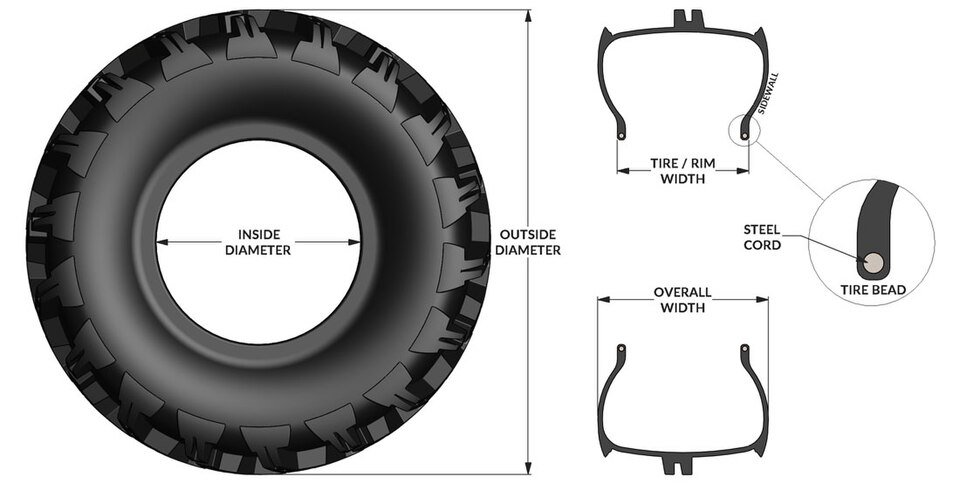Choosing the right wheel size can drastically impact your vehicle’s performance, aesthetics, and driving experience. Among the most popular options, 18 inch wheels strike a balance between functionality and style. They are large enough to enhance a car’s visual appeal and handling yet compact enough to maintain comfort and efficiency.

Whether you’re a car enthusiast upgrading your ride or a driver seeking the best balance between performance and cost, understanding 18 inch wheels is essential. This article explores the concept, benefits, challenges, real-world applications, and future trends of this popular wheel size.
Understanding 18 Inch Wheels
What Are 18 Inch Wheels?
An 18 inch wheel refers to the diameter of the wheel measured across its rim. The term does not include the tire but instead measures the metal or alloy portion of the wheel itself. Wheel size influences not only the tire choice but also the overall driving dynamics.
For a detailed history of wheels and their evolution, you can visit the Wheel Wikipedia page.
Why 18 Inches?
18 inches has become a popular size because it offers a perfect middle ground. Smaller wheels (like 15 or 16 inches) tend to be lighter and more comfortable but may compromise performance and style. Larger wheels (19 inches or more) improve aesthetics and cornering ability but can negatively affect ride comfort and fuel economy.
18 inch wheels provide a balance between handling, comfort, and affordability, making them ideal for a wide range of vehicles including sedans, SUVs, and performance cars.
Key Benefits of 18 Inch Wheels

1. Enhanced Performance
Compared to smaller wheels, 18 inch wheels can accommodate low-profile tires, improving grip and handling during turns. They provide a larger contact patch with the road, which enhances stability, braking performance, and overall vehicle control.
2. Aesthetic Appeal
18 inch wheels can significantly upgrade a vehicle’s visual profile. Their size allows for more intricate designs, making vehicles look more aggressive or luxurious depending on the style. For example, many sports and luxury vehicles come standard with 18 inch wheels because they offer a sporty yet practical appearance.
3. Cost-Effective Upgrade
While 19 and 20 inch wheels can be expensive, 18 inch wheels are generally more affordable, both for the wheel itself and for tires. This makes them a cost-effective option for those seeking improved aesthetics and performance without overspending.
4. Versatility Across Vehicles
From family sedans to SUVs, 18 inch wheels are compatible with a wide range of vehicles. Their size ensures that they fit many OEM configurations, making them a flexible choice for both stock and aftermarket upgrades.
Challenges and Limitations

1. Potential Ride Firmness
Larger wheels, including 18 inches, often require low-profile tires. While these improve handling, they can make the ride firmer and less forgiving over potholes or rough roads compared to smaller wheels with taller tires.
2. Slight Fuel Economy Impact
Heavier wheels can marginally reduce fuel efficiency because they require more energy to rotate. Though the difference is not drastic for 18 inch wheels, it’s a factor to consider if you prioritize fuel savings.
3. Tire Replacement Costs
Low-profile tires used on 18 inch wheels can be more expensive than tires for smaller wheels. Additionally, some performance tires may wear faster, which could increase maintenance costs over time.
Real-World Examples and Case Studies

Case Study 1: Sedans
Many mid-sized sedans, such as the Honda Accord or Toyota Camry, offer 18 inch wheels in higher trims. These wheels improve handling for sporty variants without sacrificing passenger comfort, showing a practical balance of performance and style.
Case Study 2: SUVs
Vehicles like the Jeep Grand Cherokee or Ford Edge use 18 inch wheels to maintain stability and handling while providing enough tire sidewall to absorb bumps and uneven surfaces. In SUVs, 18 inch wheels offer the optimal compromise between off-road capability and urban driving comfort.
Case Study 3: Aftermarket Modifications
Car enthusiasts often upgrade to 18 inch wheels from smaller OEM sizes to achieve a more aggressive stance. Custom 18 inch alloys with stylish finishes are popular upgrades, combining visual appeal with functional benefits like improved handling and braking performance.
Future Trends and Predictions
1. Lightweight Materials
The future of 18 inch wheels involves lightweight alloys and advanced manufacturing techniques. By reducing weight, automakers aim to improve fuel efficiency, handling, and acceleration without compromising durability.
2. Integration with Electric Vehicles
As electric vehicles (EVs) become more common, wheel design plays a critical role in range optimization. 18 inch wheels are ideal for EVs because they balance performance, efficiency, and aesthetics — supporting wider tires without excessive weight.
3. Smart Wheels and Sensors
Advanced sensors embedded in wheels are becoming more prevalent. Future 18 inch wheels may integrate tire pressure monitoring, temperature sensors, and traction data to enhance vehicle safety and performance, particularly in high-end and hybrid vehicles.
FAQ: 18 Inch Wheels
Are 18 inch wheels better than 17 inch wheels?
It depends on your priorities. 18 inch wheels provide improved handling, aesthetics, and performance, while 17 inch wheels may offer a more comfortable ride and lower tire costs.
Can I put 18 inch wheels on any car?
Not all vehicles can accommodate 18 inch wheels. Always check your car’s OEM specifications for wheel diameter, bolt pattern, and offset before upgrading.
Do 18 inch wheels affect fuel efficiency?
Yes, slightly. Larger and heavier wheels require more energy to rotate, but the difference for 18 inch wheels is usually minimal compared to the overall driving impact.
Are 18 inch wheels expensive to maintain?
They are generally more affordable than 19 or 20 inch wheels but can cost more than smaller wheels for tire replacements, especially if using low-profile or performance tires.
How do 18 inch wheels improve handling?
18 inch wheels allow for lower-profile tires with a wider contact patch, which improves grip, cornering, and braking performance. They also reduce sidewall flex, giving a more responsive feel.
Conclusion
18 inch wheels offer a well-rounded combination of style, performance, and practicality. They are large enough to enhance vehicle aesthetics and handling but small enough to maintain comfort, affordability, and compatibility across multiple vehicle types.
Whether you drive a sedan, SUV, or performance car, upgrading to or selecting 18 inch wheels can be a smart choice for drivers seeking balance in their ride. As technology advances, lightweight alloys, integrated sensors, and electric vehicle compatibility will continue to shape the future of these versatile wheels.
By understanding the benefits and limitations of 18 inch wheels, drivers can make informed decisions that enhance both the driving experience and vehicle aesthetics.




